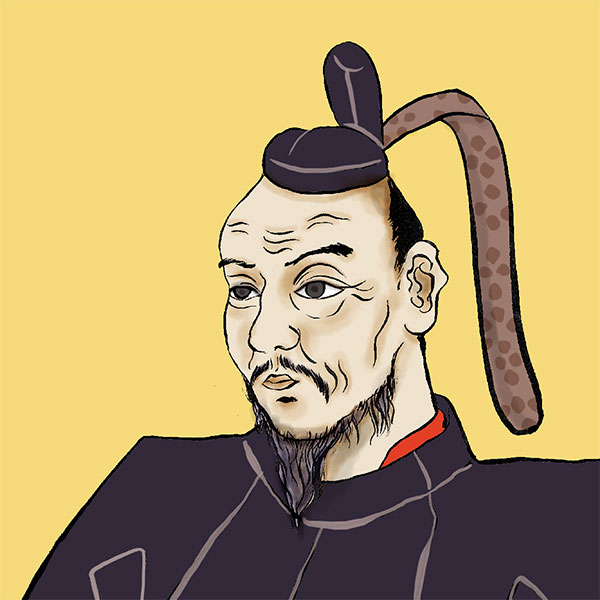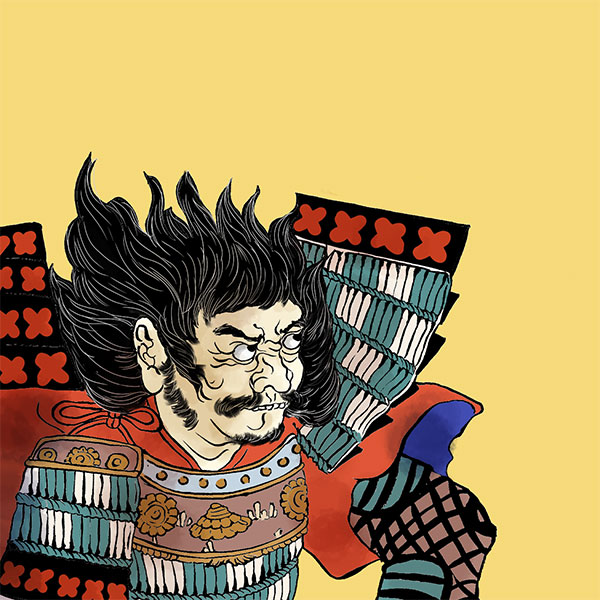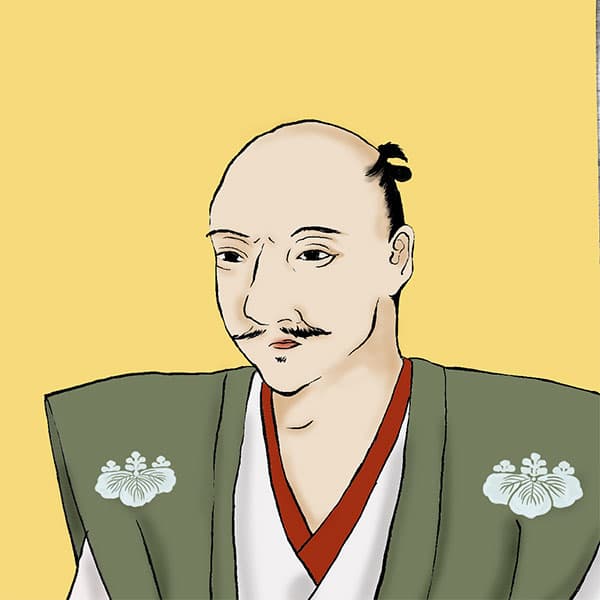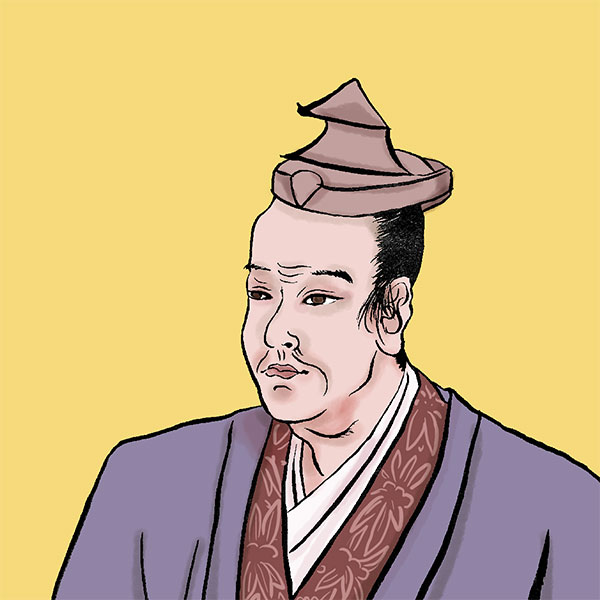Battle of Nakatomikawa (1/2)Motochika Chosokabe conquers Awa
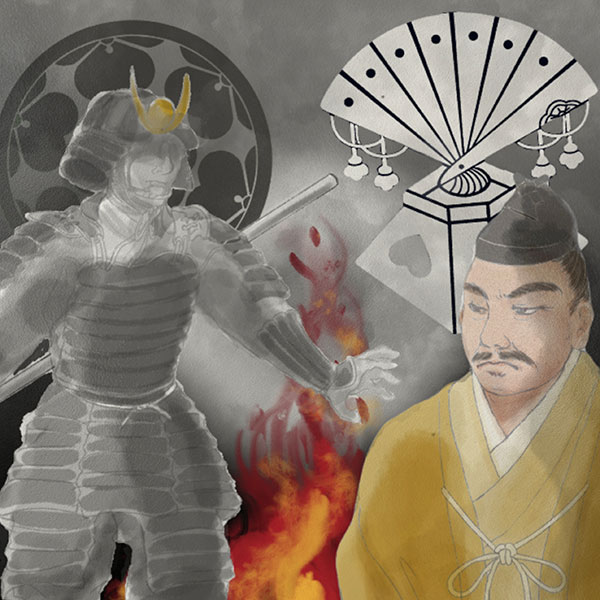
Battle of Nakatomi River
- Article category
- case file
- Incident name
- Battle of Nakatomikawa (1582)
- place
- Tokushima
- Related castles, temples and shrines

Shozui Castle

Oka Toyoshiro
- people involved
When you think of the Sengoku warlords of Shikoku, the first person that comes to mind is Motochika Chosokabe of Tosa Province (present-day Kochi Prefecture). Motochika defeated the Miyoshi clan, which ruled Awa Province (Tokushima Prefecture), and almost conquered Awa Province at the Battle of Nakatomi River, which took place from August to September 1582. is. Oda Nobunaga, who was on the verge of conquering Shikoku, was revived when he was killed by Mitsuhide Akechi in the Honnoji Incident, and Motochika began running toward conquering Shikoku, starting with Awa Province. This time, I will explain the Battle of Nakatomikawa, which can be said to be Motochika's first major war to conquer Shikoku.
Chosokabe clan ruled Tosa
Before explaining the Battle of Nakatomi River, I would like to explain the main characters of the Battle of Nakatomi River, the Chosokabe clan of Tosa Province and the Miyoshi clan of Awa Province. First, let's talk about the Chosokabe clan, which was a Gozoku (Kokujin feudal lord) that had existed in Tosa since the Middle Ages, and was known as one of the powerful Tosa Nanao clans. During the Sengoku period, its power weakened temporarily, but Motochika Chosokabe's father, Kunichika Chosokabe, restored it. It reached its peak in the era of the 21st generation, Motochika.
It is said that Motochika was a fair-skinned and gentle person who was called ``Himewakako'' when he was a child. He seems to have been looked down upon by his vassals, but he rose to fame during the Battle of Nagahama (attacking Asakura Castle in Tosa District) in 1560, where he fought for the first time at the age of 22, and after becoming head of the family, unified Tosa. We will defeat surrounding forces one after another in order to achieve this goal.
The dish that was very popular at this time was ``Ichiryo Gusoku,'' which is said to have been devised by his parent Kunichika. The name refers to a soldier who is half-farmer, half-soldier, and usually does agricultural work, but when the lord orders him to do so, he fights as a soldier with a set of armor.
In 1575, Motochika defeated the Tosa Ichijo clan at the Battle of Shimanto River (Battle of Watarikawa) and unified Tosa. In the same year, or the following year in 1576, they invaded Awa Province. They set out to unify Shikoku.
From Awa to Kinai! Mr. Miyoshi, who established the “Miyoshi Administration”
On the other hand, the Miyoshi clan of Awa Province was already active in Awa in the late Kamakura period, and in the Muromachi period, they were active as Shugodai, that is, acting Shugosho, for the Hosokawa clan, the Shugo of Awa. At the end of the Muromachi period, Nagayoshi Miyoshi overthrew the Hosokawa government, expelled the shogun from Kyoto, took control of the Kinai region, and established the ``Miyoshi government.'' Nagayoshi is now regarded as the ``first ruler of Japan'' before Nobunaga.
Yoshitsugu Miyoshi, who succeeded Nagayoshi at a young age, established a coalition government with the guardianship of Nagaitsu Miyoshi, Muneyoshi Miyoshi, Tomomichi Iwanari, the Miyoshi trio, and Hide Matsunaga, a senior vassal of the Miyoshi clan. During the Eiroku Incident in May 1565, a major incident occurred in which Yoshiteru Ashikaga, the 13th shogun of the Muromachi shogunate, was murdered.
Afterwards, the Miyoshi government collapsed due to conflict between the Miyoshi clan and the Matsunaga clan. Later, within the Miyoshi clan, the Miyoshi Sanninshu and Miyoshi Yoshitsugu came into conflict, and as the conflict continued within the clan, Oda Nobunaga rose to power and fought with the Miyoshi clan. It's a bit complicated in this area because allies and enemies keep changing, but in the end, Yoshitsugu became an enemy to Nobunaga, lost the battle of Wakae Castle (Higashiosaka City, Osaka Prefecture) in 1573, and committed suicide. As a result, the Miyoshi family was destroyed.
On the other hand, the Awa Miyoshi clan, which was entrusted with the administration of Awa by the Miyoshi main family, was 8-year-old Nagaharu Miyoshi, who succeeded his father, Miyoshi Mikyu, in 1562. He ruled Awa with assistance. However, the relationship between the two eventually deteriorated, and Choji subdued Nagafusa at the Battle of Kamiosakura Castle in 1572. He became a tyrant, causing the defection of the Kagawa clan and the Kozai clan, and also forced the people of his territory to convert to the Hokke sect, which made him hated throughout Awa Province. Awa Province, which was in disarray, allowed the Chosokabe clan to invade. In 1577, Choji himself was defeated by Masayuki Hosokawa at the Battle of Aratano and committed suicide, which led to the demise of the Awa Miyoshi family.
I thought all the Miyoshi clans had perished, but the only one left in Shikoku was Sogo Masayasu in Sanuki Province (Kagawa Prefecture). He was the second son of Miyoshi Mikyu, and after the fall of the Awa Miyoshi family, he entered Shozui Castle (Aizumi-cho, Itano-gun, Tokushima Prefecture) and worked to restore the Miyoshi clan. He then began to quarrel with Motochika Chosokabe over Oda Nobunaga.
Furthermore, even after the fall of the Miyoshi main family in the Kinai area, Yasunaga Miyoshi, a member of the Miyoshi family, continued to resist Nobunaga. Although he continued to fight with Nobunaga's rival Honganji faction, he was unable to withstand Nobunaga's onslaught and surrendered to Nobunaga through Matsui Yukan in April 1575. After that, Yasunaga was given an important position in the Nobunaga administration, probably because he was highly regarded for his role as a messenger to Shikoku.
What is the relationship between the Chosokabe clan, the Miyoshi clan, and Oda Nobunaga?
After unifying Tosa, Motochika Chosokabe approached Nobunaga Oda through Mitsuhide Akechi and formed an alliance with him. Why Mitsuhide? Some people may think so, but Motochika's legal wife was from the Toki clan and was the half-sister of Toshizo Saito, a senior vassal of Mitsuhide (*there are various theories). For this reason, Motochika and Mitsuhide had a relationship, and Mitsuhide served as a conduit between Motochika and Nobunaga.
Nobunaga was once an enemy of the Miyoshi clan, and it is said that at the time of the alliance, he issued a red seal to Motochika stating, ``Shikoku depends on Motochika's decision.'' Furthermore, Nobunaga took over Motochika's eldest son, Eboshichika, and Motochika's son received Nobunaga's first character and was named ``Nobochika.''
In this way, the relationship between Nobunaga and Motochika was initially good. However, in 1575, as mentioned earlier, Yasunaga Miyoshi surrendered to Nobunaga and began to receive important positions in the Nobunaga administration, and the relationship gradually deteriorated. In June 1581, Nobunaga ordered the Chosokabe clan to cooperate with the Miyoshi clan.
In addition, the Chosokabe clan's possession of Shikoku was limited to Tosa Province and the southern half of Awa Province. Motochika, who was distrustful of Nobunaga's favor with the Miyoshi clan, strongly objected to this decision. What on earth was the red seal that said it was cut out? Moreover, it was a land that he had conquered on his own, so there was no reason for him to be criticized like that! That's probably what you thought.
For Nobunaga, the Chosokabe clan, which did not listen to orders, was a target for subjugation. Deciding on a Shikoku expedition. The commander-in-chief was Nobutaka Oda, the third son, and Hide Tanba, Yoritaka Hachiya, and Nobusumi Tsuda were also scheduled to participate. On May 7, 1582, Nobunaga explained to Nobutaka his plan to adopt Nobutaka to Yasunaga Miyoshi and give Sanuki Province to Nobutaka and Awa Province to Yasunaga. Furthermore, the announcement regarding Iyo Province (Ehime Prefecture) and Tosa Province was to be made when Nobunaga went to Awaji.
At this point, Yasunaga Miyoshi had arrived at Shozui Castle as an advance party, and had already captured Ichinomiya Castle (Ichinomiya Town, Tokushima City, Tokushima Prefecture) and Ichiyama Castle (Hachiman Town, Tokushima City, Tokushima Prefecture). Following Nobunaga's orders, Nobutaka Oda arrives at Sumiyoshi on May 29th and prepares to depart for Shikoku. In addition, Hide Tanba and Nobusumi Tsuda gathered troops at Settsu Osaka, and Yoritaka Hachiya gathered troops at Izumi Kishiwada. The main army, numbering 14,000 in total, was scheduled to depart for Shikoku on June 2nd.
Mr. Chosokabe is in a big pinch...! What happened in the early morning of June 2nd was the Honnoji Incident by Akechi Mitsuhide.
Battle of Nakatomi River ① Chosokabe attacks Awa in the wake of Honnoji Incident
The Chosokabe clan, led by Motochika Chosokabe, was saved from a predicament by the Honnoji Incident on June 2, 1582. In the first place, the person who caused the Honnoji Incident was Akechi Mitsuhide, who was close friends with Motochika. Nobunaga's conquest of Shikoku has been cited as one of the causes of the Honnoji Incident.
After receiving the news of the Honnoji Incident, Yasunaga Miyoshi, who lost his backing, abandoned Shozui Castle, left Awa, and returned to Kawachi (eastern part of Osaka Prefecture). As for the Chosokabe clan, Motochika's eldest son Nobuchika devised a strategy to capture Shozui Castle at this opportunity, and relied on his uncle Chikayasu Chosokabe in Kaifu (Ama District, Tokushima Prefecture). Arrival in. They waited for Motochika's support, but Motochika put a stop to this.
According to Motochika, written in 1631 by Masashige Takashima, a vassal of the Chosokabe clan, Motochika at this time considered his son's actions to be ``the most reasonable thing for a young man to do.'' Taking into account the fatigue of the soldiers and the people of the territory due to the battle, he urged Nobuchika to attack in August after making sufficient preparations, and sent Nobuchika back to Oka Toyo Castle (Nangoku City, Kochi Prefecture).
Motochika holds a military council regarding the attack on Awa at Oka Toyo Castle. According to "Chogenki (Chomoto Monogatari)", which is said to have been written by Masaga Tateishi, a servant of Motochika, in 1659, the chief retainers, castle samurai, and one ryo (one ryo) It is said that they convened Gusoku in a separate room and listened to their opinions. At this time, the retainers and castle samurai expressed the view that the Miyoshi clan was still a powerful force, and proposed a sustained war that would exhaust the Miyoshi clan over a long period of time. Their strategy was to destroy the autumn crops such as rice and wheat, destroying their food supply.
On the other hand, the Ichiryo Gusoku group suggested an early decisive battle, saying, ``If we take it easy, not only Awa Province, but even Tosa Province will be taken over by the Miyoshi clan.'' Furthermore, since Yasunaga Miyoshi's adopted son was Hideyoshi Toyotomi's nephew Hidetsugu (then Shinyoshi Miyoshi), it was pointed out that Hideyoshi, who defeated Mitsuhide Akechi, might join forces with the Miyoshi clan. He appealed that before that happened, it would be better to subjugate the ruler of Awa Province, Sogo Soho, and seize Awa Province.
Motochika's choice was a one-shot plan. Motochika asked for more concrete measures, and Ichiryo Gusoku and his friends proposed a decisive battle at Nakatomigawa. In this way, Motochika gathered his troops for the battle at Nakatomi River. At this time Motochika, probably thinking of total war, issued a decree stating, ``Anyone between the ages of 15 and under 60, whether he is a second son, third son, or has no territory, will be taken over.''
He gathered Nobuchika, his younger brother Chikayasu Kasokabe, and all their servants together and departed from Oka Toyo Castle. On August 27th, we arrived at Nakajima on the south bank of the Yoshino River. At this point, the number of soldiers had swelled to 23,000. Motochika divided his army into three, and with Chikayasu as the vanguard, he and 3,000 soldiers took up camp on the south bank of the Nakatomi River.
On the other hand, when Sogo no Yasuyoshi lost Nobunaga's protection, he abandoned Ichinomiya Castle and Iyama Castle (both in Tokushima City, Tokushima Prefecture) and concentrated his forces at Shozui Castle to strengthen its defense. Its military strength is approximately 5,000. Furthermore, they set up their headquarters at Shokoji Temple, built earthen embankments on the banks of the Nakatomi River, and stationed their gun corps, preparing to intercept the Chosoka army. Then, on August 28th, the Battle of Nakatomikawa began.
Battle of Nakatomikawa ② Fierce battle where the fate of the country was at stake
On August 28, Chosokabe's army and Sogo's army (Miyoshi's army) faced each other across the Nakatomi River. This is the beginning of the Battle of Nakatomi River. Chosokabe's army is at risk of counterattacking and falling into a critical situation if they don't attack Miyoshi's forces now, with Sogo no Yasuyasu at their wit's end. It was a battle with no trace left on either side.
The article on the Battle of Nakatomikawa continues.
- people involved

- WriterNaoko Kurimoto(Writer)I am a former travel industry magazine reporter. I have loved history, both Japanese and world history, since I was a child. I usually enjoy visiting temples and shrines, especially shrines, and often do ``pilgrimages to sacred places'' themed around historical figures. My favorite military commander is Ishida Mitsunari, my favorite castle is Kumamoto Castle, and my favorite castle ruins is Hagi Castle. My heart flutters when I see the ruins of battle castles and the stone walls of castle ruins.



